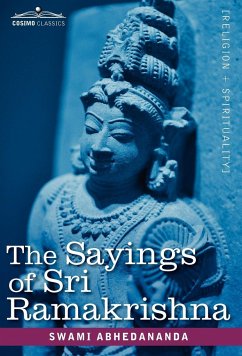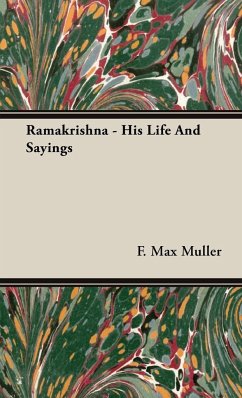
The Sayings of Sri Ramakrishna
Versandkostenfrei!
Versandfertig in über 4 Wochen
27,99 €
inkl. MwSt.
Weitere Ausgaben:

PAYBACK Punkte
14 °P sammeln!
This 1903 collection of the wisdom of the great sage logically arranges Ramakrishna's aphorisms to create a broad, practical, nonsectarian set of instructions about living a spiritual life. It inspired seekers after the divine a century ago, and it continues to do so today. Indian mystic SRI RAMAKRISHNA (1836-1886) was revered in the East for his keen, artistic intellect and his religious tolerance. He frequently worshipped alongside Muslims and Christians, which was unprecedented at the time. After he directed his disciple, Indian spiritualist SWAMI ABHEDANANDA (1866-1939), to travel the Unit...
This 1903 collection of the wisdom of the great sage logically arranges Ramakrishna's aphorisms to create a broad, practical, nonsectarian set of instructions about living a spiritual life. It inspired seekers after the divine a century ago, and it continues to do so today. Indian mystic SRI RAMAKRISHNA (1836-1886) was revered in the East for his keen, artistic intellect and his religious tolerance. He frequently worshipped alongside Muslims and Christians, which was unprecedented at the time. After he directed his disciple, Indian spiritualist SWAMI ABHEDANANDA (1866-1939), to travel the United States and Canada in the late 19th century to spread the teachings of Hindu Vedanta philosophy, he was soon beloved in the West as well.












